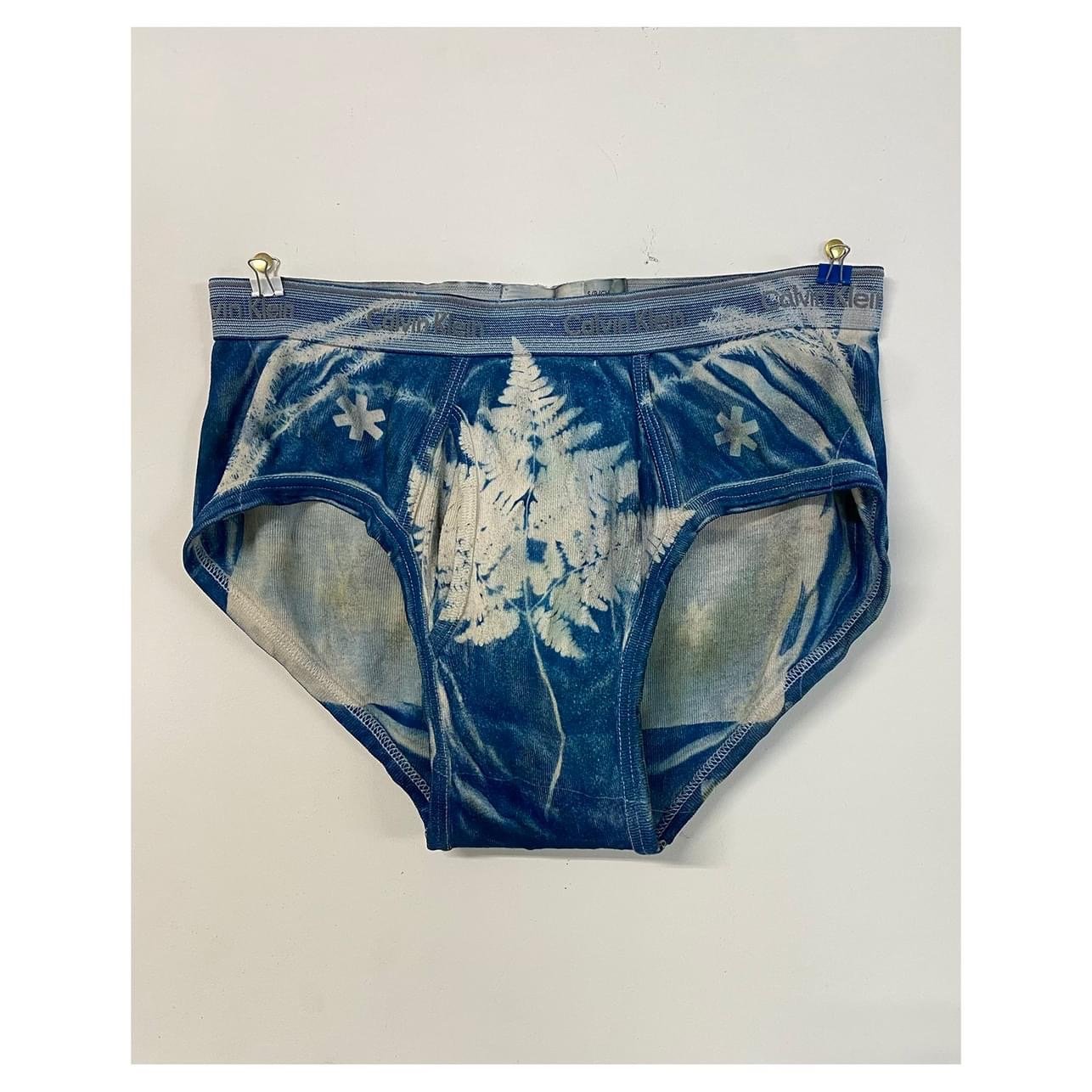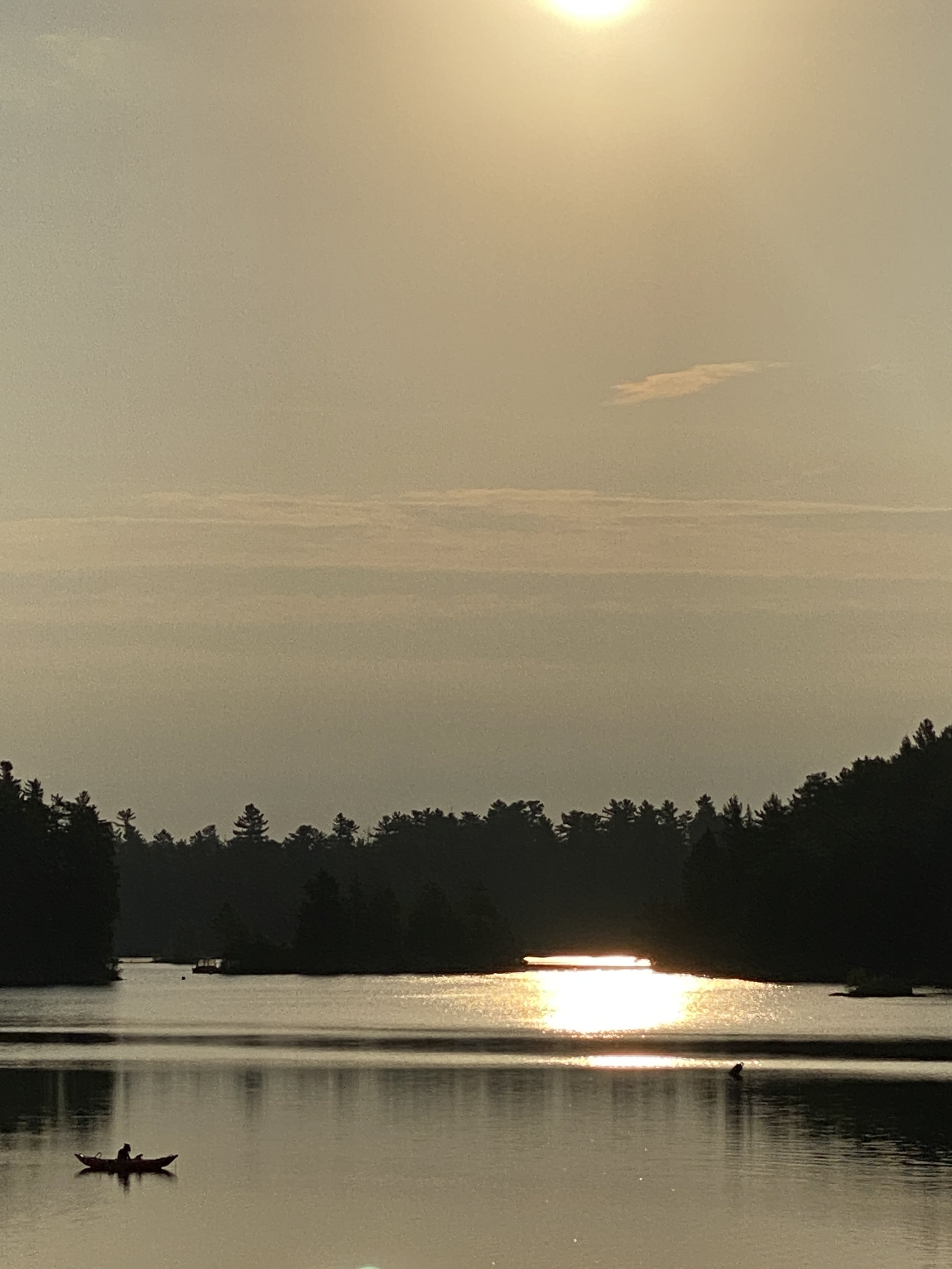This past summer, Pearl Van Geest and I lead a group of 16 queer artists to Paradise Lodge in Temagami for the Queer Up North Artist Residency, a pilot project and collaboration between the Throbbing Rose Collective and The White Bear AIR run by the Nipissing Regional Curitorial Collective.
The group takes a break on
Perched at the edge of the wilderness, the lodge became our “last civic outpost”—a liminal space where urban queer artists could leave the city behind, trading concrete and noise for wildflowers, quiet waters, and endless woods. Over two weeks, we explored a place that both expanded and contracted with weather, time, and season, and together, we found something extraordinary in the margins.
Pearl Van Geest and guest curator, Caesar Ferero, speak with Francisco Alvarez about his drawing practice.
For queer artists, rural spaces often carry a mix of beauty and unease—stunning landscapes can feel isolating or even unsafe when visibility and acceptance are scarce. Queer Up North offered a space of safety, a portal into wilderness that encouraged artists to venture out, alone or in groups, to explore nature on their own terms. Some stayed close to the lodge during storms or evenings, while others hiked deeper into the woods, seeking sacred, personal spaces to create and reflect.
Keeping cool in the hot sun. (l-r) Kristy Boyce, Jackson Bailey, Atlas Gifford, Schem Rogerson Bader, Lou Losier.
As the weeks unfolded, artists experimented with new materials, pushing the boundaries of process and product. Wildflowers growing along the roadside inspired comparisons to queer resilience—thriving in the margins, unnoticed yet vibrant. Nature itself became a collaborator, transforming the artists’ works in unexpected ways. Photosensitive plants, underwater sound recordings, ephemeral ink drawings on tree trunks—each project reflected the artists’ open-minded spirit of experimentation.
Cyanotype on underwear experimentation by Walt Segers.
Terry Dame, one of the participants, brought a particularly poetic process. Recording the sound of paddling on the lake with a custom underwater mic, she turned these vibrations into music. She projected the sound’s movement as ghostly laser patterns onto the water, creating a haunting synthesis of light, sound, and nature. Her work was just one of many moments where the wilderness became more than a backdrop—it became a co-conspirator in the creative process.
Hanging out with Riley at the Old Temagami train station. (L-R) James Fowler, Ryley, Walt Segers, Pearl Van Geest, Cai Sepulis, Lou Losier, Jackson Bailey, Terry Dame, Schem Rogerson Bader, Kristy Boyce.
What struck me most was the collaborative energy. Queer Up North felt like a “big gay art camp,” where friendships formed as naturally as the art. Participants helped one another with photoshoots, shared materials, and discussed their ideas late into the night. The residency provided an open-ended space to play, explore, and begin work that might take years to fully resolve.
Temporary reverse sun tattoo by Pearl Van Geest
Sometimes, art in the wilderness meant embracing impermanence. Pearl Van Geest’s walnut ink tracings of body parts on tree trunks disappeared overnight—what remained was the memory of the act itself, fleeting and beautiful. Another was a second temporary reverse sun tattoo Pearl painted on my back. After being in the sun for the day, washing off the tempra paint revealed markings that lasted the rest of the summer.
Temagami Local Amber Nussey became our point person to the community and she took many of the group of tours and ATV rides in the area. Thanks Amber!
Of course, there were challenges. For urban dwellers used to creature comforts, adjusting to long hikes and rural isolation took time. Dietary restrictions, in a lodge historically run by hunters and trappers, required some flexibility (something we plan to improve for future residencies). But these challenges, like much of the residency, pushed us to adapt, rethink, and grow.
Nightly camp fires created a sense of sharing and community. (L-R) Schem Rogerson Bader, Walt Segers, Christian Bernard Singer, Kristy Boyce, Lou Losier, David Frazier
Queer Up North became an experiment in queer ecology—how queerness and nature intersect at the edge of civilization. As we watched the wilderness slowly reclaim the landscape around the lodge, it felt like a metaphor for queer lives thriving in unexpected places. The artists left with new connections, new inspiration, and a deeper kinship with nature—many, including myself, more eager than ever to bring these experiences back into our work.
Still from “Queer Swim” Running Time 2:31, 2024.
Some of these reflections will carry forward into Wild Waysides: Queer Ecologies and the New Natural, the upcoming exhibition series in 2025. I hope these moments of discovery, solitude, and collaboration inspire others to find their own waysides, wherever they might be.
The last day of the trip. ( L-R) Kristy Boyce, Pearl Van Geest, Schem Rogerson Bader, John Rubino,Lou Losier, Patrick DeCoste, Terry Dame, Atlas Gifford, James Fowler, Charlie Hunter, Walt Segers, Francisco Alvarez, David Frazier, Christian Bernard Singer Missing: Jackson Bailey, Cai Sepulis
Terry Dame making audio recordings on the lake.
Queer Up North reminded me that there’s poetry in the margins—beauty in the wildflowers, wisdom in the wilderness, and resilience in queer artists finding safety and creativity at the edge of the world.











